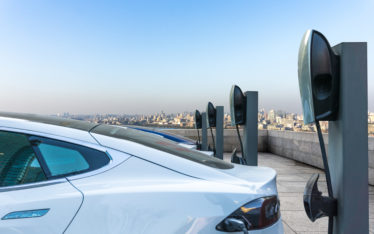2022 will likely mark the third year where our industry undergoes unexpected and unprecedented change. It could also be the start of our journey back to something resembling the world we knew before COVID-19. We’re never going to see a world like 2019 again, nor should we expect the sheer volume of price and supply volatility we saw last year. That doesn’t mean there won’t be surprises. The previous three years have made it clear we should expect to be surprised.
In today’s blog, we’ll briefly look at where 2021 left us, then have a much longer discussion about what industry leaders and analysts foresee based on ongoing challenges and innovations.
2021: Year in Brief Review
Your business is likely no stranger to a lack of new or pre-owned vehicles. If one thing defined market trends last year, it was the worldwide supply shortage of just about everything. As far back as June of 2021, ReVo discussed the ongoing inventory issues, but through the year’s end, the problems only got worse. Cox Automotive’s reporting shows September’s inventory values sat at a dismal 25 days down from 35 in May, eventually climbing back to 35 days’ supply as 2021 began.
There was some shift in which brands were most at risk of running short. While Toyota and Lexus continued to have the least on-hand inventory, others either gained significant ground or lost the same. Mitsubishi made perhaps the largest moves, going from a 66-day supply in May to 30 in December. Mazda dipped by close to 20 days’ supply as well, with several other prominent automakers seeing similar declines.
Some automakers were able to increase production and supply, including GMC, Chrysler Dodge Jeep RAM, and Honda. Honda, in particular, saw notable inventory growth, rising to 36 days’ supply.
The average vehicle price continued to grow as supply sprang back and forth, increasing to $47,707 in December over May’s $40,566. Customers were still plenty happy to purchase either online or, increasingly, at dealerships despite this increase. Having a robust digital approach led to increased engagement and satisfaction among customers, whether they bought from a traditional dealer or through used-vehicle-only options like Vroom and Carvana.
The industry saw 15,061,885 vehicles sold in the US, all told, which, given the ongoing issues with price, availability, and supply chain challenges, fits surprisingly well with historical norms. Used vehicles were another major story, with prices increasing to an overall average of $28,205 and dealerships across the country averaging 51 days’ worth of inventory.
2021 was also an important year for electric vehicles. While they still only accounted for about 4% of the market, US News reports total sales increased by an enormous 87.9%. We talked at length about EVs in a previous blog post, and the potential we noted back in November seems to have only increased. Thanks to Tesla’s success, changes in environmental thinking, legislative action, and other movements, CNBC reports both experts and executives see an aggressive ramp-up in EV adoption over the next decade.
While not exclusive to 2021, more and more members of Generation Z were also starting their car buying and professional careers last year. Their generation, the first “digital native” cohort, has different expectations about how anything can be bought and sold. They also have unique desires about just about everything else. Every business and industry is still learning how to capture the attention of Gen Z, but those who find a winning strategy will come out ahead.
Industry Leader Predictions for 2022
In the same way “pivot” was the defining concept of 2021 and 2020, 2022 could be focused on “recovery.” Investment firm ING predicts overall industry growth of between 4-6%, though that assumes there aren’t any more surprises. They admit that, like many experts, the scale and severity of the supply chain issues caught them off guard, forcing their projections to be cautious to compensate.
These conservative estimates aside, ING does believe “2022 has a propensity to be a healthier recovery year than 2021, assuming that semiconductor shortages start to subside.” As mentioned in our inventory shortages blog post, technology industry leaders foresee their ongoing issues persisting until 2023. According to chipmaker Infineon’s CEO, that estimate hasn’t changed in the six months since our post.
Deloitte’s analysts tend to agree with the 2023 date as well, as reported by ZDNet. Their data indicate that semiconductor issues will ease throughout 2022, helping production improve overall.
New vehicle inventory is likely to increase due to supply chain struggles beginning to resolve, though until inventory fully recovers, Newsweek’s analysts expect new car prices to continue rising. Additional cost won’t stop consumers from buying, thankfully. 2021’s incredible market is likely set to continue into at least the first half of 2022. Despite the constant rise in new-vehicle cost, consumer demand hasn’t wavered, with Cox estimating total 2022 annual sales at more than 16 million vehicles.
With inventory challenges beginning to ease somewhat this year and accounting for the constant demand for new vehicles, it could follow that the used car market is in for a rude awakening. Cox, Newsweek, and Linchpin SEO agree that while there will be a relative depreciation in used vehicle pricing, the market will continue to show strength.
Lynchpin notes a possible 9% increase to the pre-owned market between 2019 and 2025. Cox estimates the spring of 2022 will see the market keep growing before depreciation reaches normalized levels. And no, there is no crash coming. Prices will stay well within safe margins, and even if they drop slightly more than expected, history shows they’re likely to rebound quickly. Even after the 2008 market crash and 2020’s lockdowns, it took only seven and three months respectively for prices to recover from those drops.
There is plenty to be optimistic about as we look to 2022’s industry outlook, but being careful and conservative with your assumptions is still the best policy. The recovery is ongoing and could accelerate or take a downturn with equal ease.
Other areas of our industry are only going upward, primarily electric vehicles and new technological features thanks to continuing advances and continued consumer sentiment shifts.
Technology On the Rise
The ascendence of electric vehicles has few better markers than General Motors redesigning their iconic corporate logo to focus on their pivot toward electric vehicle production. CNBC notes in their article that this is only the fifth time in more than a century the industry giant has updated its logo. GM does so precisely to highlight the Ultium battery platform it developed for use across its EV lineup.
EVs generally look to increasingly dominate sales as we move forward in the 2020s and beyond. The US is slower to adopt electrification than the European or Asian markets, but that doesn’t mean their losing pace. Cox projects electric vehicle growth will outpace larger industry growth.
A recent Deloitte study backs up this data and what we mentioned in our November blog on electric vehicles. 69% of US consumers still focused on internal combustion engines (ICEs) as the main power for their vehicles: an 8% decrease over the YouGov poll data we looked at in November. Deloitte’s data takes hybrids, hybrid electrics, and battery-powered electric vehicles into account, as well as more experimental drivetrains like hydrogen, natural gas, and ethanol.
Outside of EVs, connectivity and informational technology continue to be an important set of features across markets. Deloitte’s research shows US drivers are most concerned with their vehicles providing updates to traffic, offering quicker, safer routes to a destination, and providing maintenance and vehicle health reports. While most consumers don’t want to pay more for them, they expect them as part of the package when they purchase a new car.
However, most new car buyers will need to temper their expectations about some comfier features. Newsweek lists “parking assist or…heated seats or wireless charging” as just a few of the options that might not be available. Late 2022 could see a return to widespread production of vehicles with these new options. Thank the semiconductor shortage here.
Your business will have some additional shifts to reckon with. Direct-to-consumer options that focus on digital sales interactions continue to increase in popularity and effectiveness. Companies like Tesla, Rivian, Lucid, and others have shown OEMS can turn more and more to an online buying experience. Carvana, Vroom, and the like remain growing disruptions to traditional dealerships. You can’t, of course, test drive a car on a computer, but more and more drivers can and will complete other steps of buying a car from their homes or offices. Expanding and maintaining your online offerings is paramount to staying fully competitive in the market.
***
2022 will be our industry’s first chance to see if the steps we took during the past two years translate to continued success. We’ve shown that we can turn lean times into some of our best, and now we have the opportunity to seize on the progress already made. Significant changes are coming, whether in the EV market or what will or won’t make it into the new vehicles on lots. We just need to be ready to face them.
You can depend on ReVo MG to help you navigate our shifting landscape with our proven direct-mail solutions. Like you, we know what it is to embrace change, and we’re here to ensure you see the business that allows you to face future challenges head-on. Contact us today to learn more.



